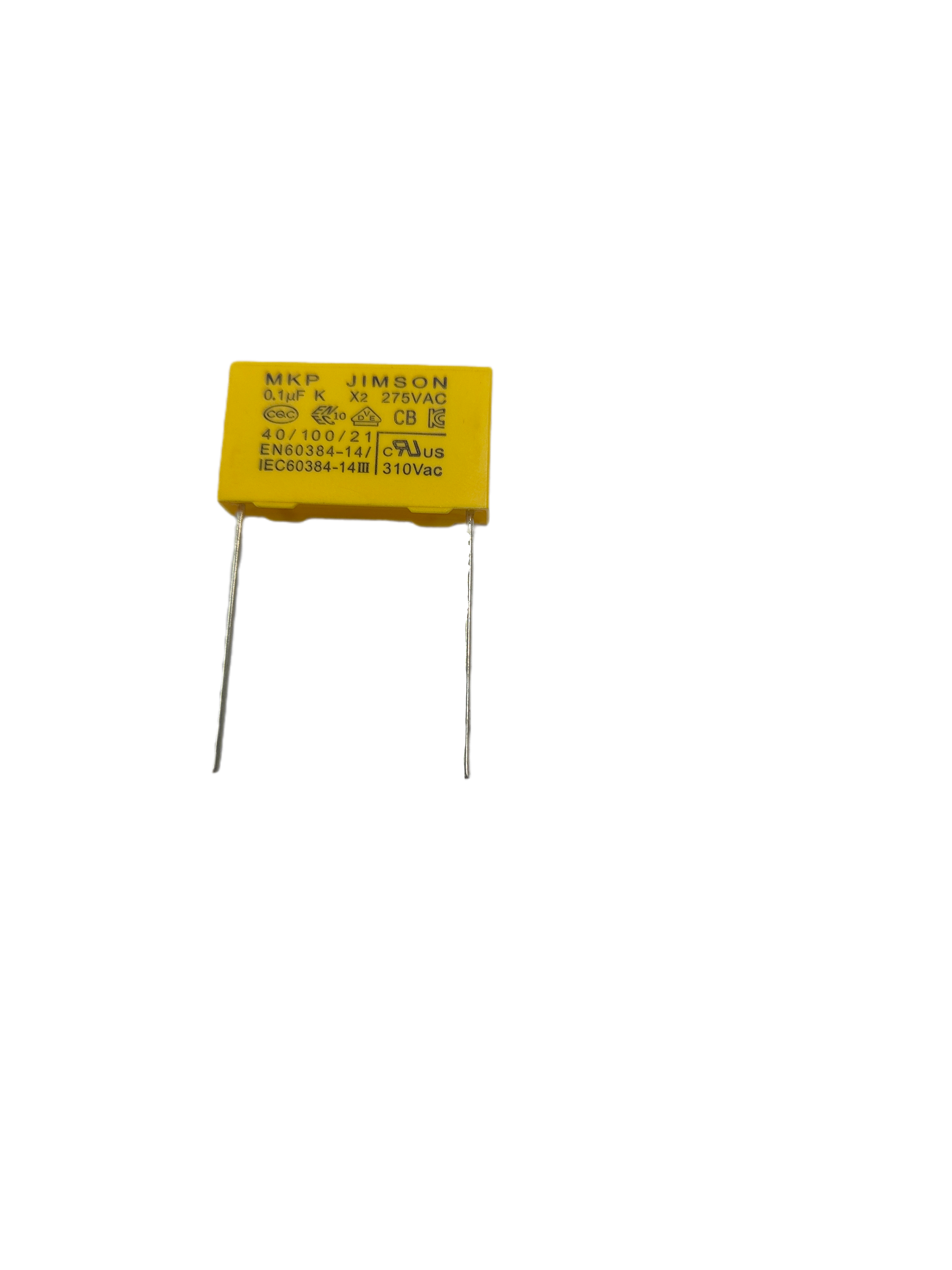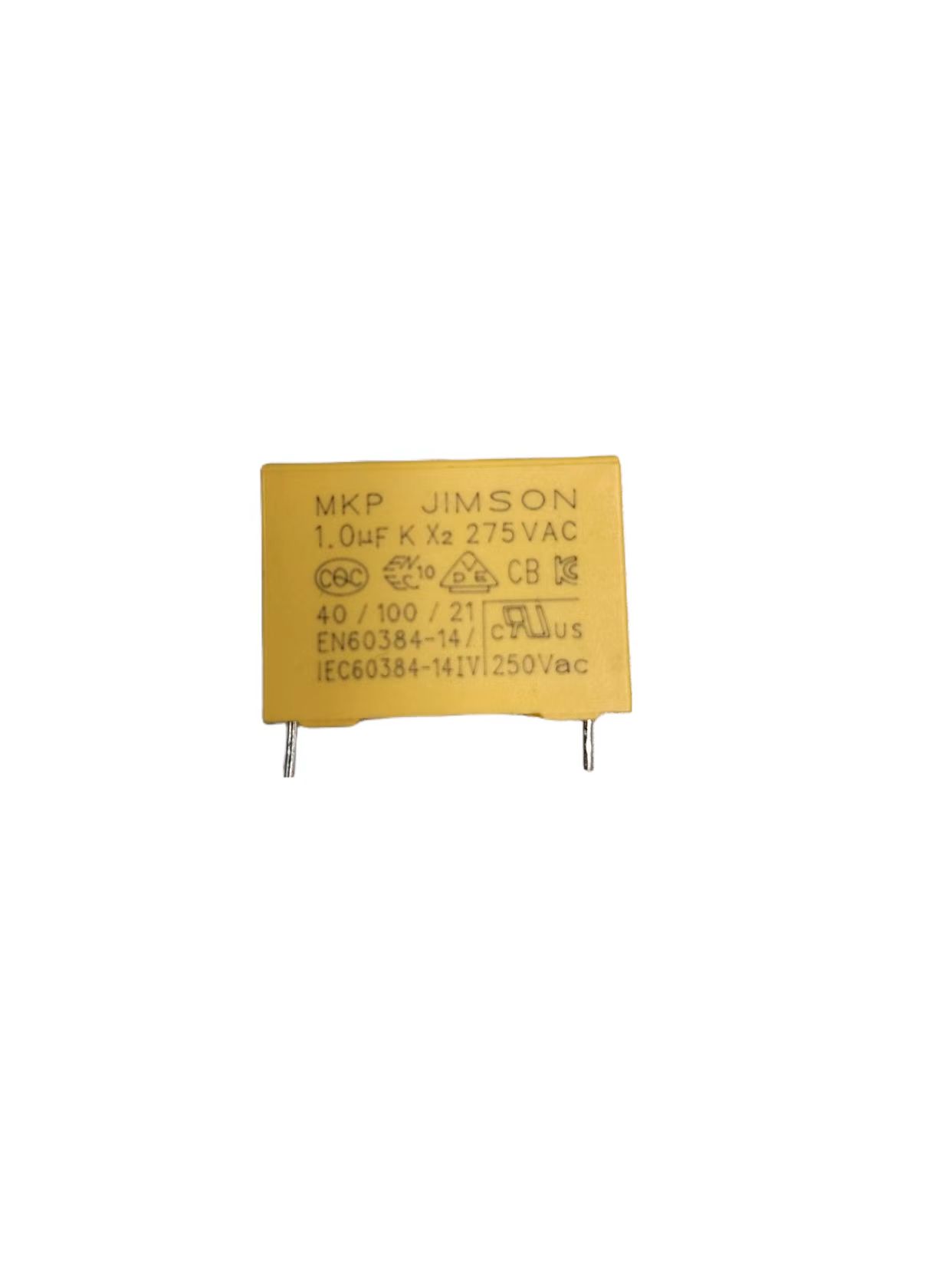In the field of automotive electronics, a large number of capacitors used in this type of components, including PCBA circuitry used in small film capacitors, electrolytic capacitors, etc.; in the motor controller used in large-scale DC-Link film capacitors, this article focuses on the axial film capacitors.
The process of film capacitors can be simply summarized as follows: a metallized film is vaporized on the base film, and then the metallized film is cut and wound according to certain specifications, and then the leads are soldered at both ends and mounted into the case. The thickness, material and pattern of the metallized film determine the electrical characteristics and life of the film capacitor, so the metallized film is a decisive indicator of the performance of the film capacitor.

Axial Film Capacitors
China is the world’s largest axial film capacitors manufacturing country, accounting for about 60% of the global total output value. 2020 China film capacitor industry market size of 10.2 billion yuan. With the growth of film capacitors in new energy vehicles, photovoltaic applications, the next three years is expected to produce more than 20 billion yuan incremental market size, China’s film capacitor market is expected to enter a period of rapid growth.
According to the type of current to distinguish, can be divided into two types of DC film capacitors and AC film capacitors.
DC film capacitors are characterized by high capacitance, low voltage, polarity, self-healing properties, high reliability, and have good temperature stability and long service life and other advantages. Typical applications include motor drives, UPS, solar inverters, electronic ballasts, small motors for automobiles, household appliances and various types of power supplies.
As DC-Link capacitors in motor inverters, axial film capacitors play two important roles: 1) smoothing bus voltage and 2) reducing line inductance.
AC film capacitors, characterized by their small capacity and high withstanding voltage, are indispensable components for conventional industrial AC power applications as well as for starting and running asynchronous motors. AC capacitors are widely used in AC output filters, especially in output filters for uninterruptible power supplies (UPS) and photovoltaic inverters.
The role of axial film capacitors in photovoltaic inverters is mainly to absorb the high pulse current at the DC-Link side, so that the voltage fluctuation at the inverter side is stable and controllable, which is an important guarantee for the stability and performance of photovoltaic equipment.
Axial Film Capacitors Industry Chain
Film capacitor industry chain upstream mainly includes base film and metal foil, of which the base film is the core raw material, different materials of the base film corresponding to different performance of the capacitor.
The downstream application scene is more decentralized, film capacitors can be used in DC, AC, power electronics and other equipment occasions, mainly including home appliances, photovoltaic, wind power, new energy vehicles and so on.
Base film: the most important raw material for axial film capacitors
The base film, i.e. electrical grade electronic film, is the most important upstream raw material as the dielectric of film capacitors and determines the performance of film capacitors.
Depending on the dielectric material, the performance of axial film capacitors varies. Among them, base film is categorized into polypropylene film, polystyrene film, polyethylene film, and polycarbonate film.
From the global base film market pattern, the current high-end film capacitor raw materials Japanese manufacturers occupy a more obvious leading edge, Japan Toray, Mitsubishi Corporation and the United States DuPont is the world’s high-quality base film supply; domestic base film suppliers such as Jadeli.
Significant increase in reliability requirements
In capacitor applications, capacitors can fail due to transient high voltage breakdowns, especially in power level circuits, where capacitor burnout can be a major hazard. For new energy related applications, the risk and loss associated with capacitor failure is much higher than in conventional applications, and therefore film capacitors are required to be highly reliable. Metallized film capacitors with “self-healing” capabilities are the preferred choice.
Metallized film capacitors replace metal foil as the electrode by vaporizing a metal film on the surface of the plastic dielectric. On the one hand, the thickness of the electrode is greatly reduced, which is conducive to the miniaturization of the capacitor after winding; on the other hand, when the capacitor is pierced, the metal layer at the pierced area can be melted and evaporated under the action of the electric arc to form the insulating area again, so that the remaining part of the capacitor continues to work normally.
From the metallized film capacitor high reliability principle is not difficult to see, the key process lies in the coating. The coating process is not complicated from the principle, but the coating machine is expensive, and there is a lot of Know-How in the coating process, which requires a long time of production experience.
Now on the market axial film capacitors price difference is great, to be frank, the core is the difference in raw materials, if the raw materials used are very poor, the unit price is indeed very low, but the quality of film capacitors is very poor, the life expectancy is very short. Can be understood in this way, film capacitors are also a penny for a penny, too low a unit price, manufacturers are realized by cutting corners.
Related Products





